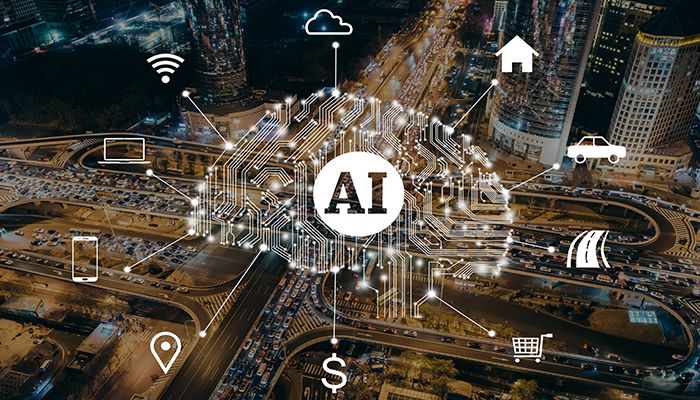In this Run and Reinvent podcast, Seth Paskin, Director of Technical Marketing at BMC chats with Ram Chakravarti, BMC’s Chief Technology Officer as he shares his thoughts on what AI means and the impact of machine learning and intelligent technologies on businesses and customers, now and into the future. Below is a condensed transcript of our conversation.
Seth Paskin: We hear a lot about machine intelligence in our specific market these days and you’ll hear terms like: cognitive, artificial intelligence, machine learning, RPA… What we were hoping is that you could start us off and give us a quick primer on what those terms are and what kind of applications those technologies have?
Ram Chakravarti: Seth, that’s a great question and you know there’s buzz word lingo. Let’s try and get grounded on what these actually mean. So, the term cognitive gets used – gets bandied about. If we look at what a cognitive system is, it’s a natural or an artificial system of interconnected components that interact with the world to understand reason and learn, right? You, me, Jill and all the people at BMC and the broader world are examples of natural cognitive systems of beings. If we then take that to the artificial dimension, that’s where AI comes into play. Artificial Intelligence is a machine; it’s an artificial cognitive system. AI is defined as a machine that can perform cognitive functions that would be associated with human minds such as: perceiving, reasoning, learning, and problem solving. Marketing of technologies that are AI based to solve our business problems. Robotics and autonomous vehicles, computer vision, natural language processing, virtual agents in machine learning, are examples of said technologies.
If we flip to the next part or dimension, machine learning. What is machine learning? If we double click into a subset of AI, machine learning is a branch of AI that is categorized by training systems rather than programming them as would typically be done in a traditional programming language. You get a set of input and then you basically learn from processing that set of input and apply the learnings, and then are you able to provide an observable output. An observable output, again, reinforces in some cases what you’ve learned, plays it back. It’s about learning and then providing better responses. What is the use of machine learning? Practically most recent advances in AI have been done by applying machine learning to very large data sets. Machine learning algorithms typically detect patterns and learn how to make predictions and recommendations. But processing data and experiences, rather than by destining explicit programming instructions. This is a huge area of focus and the cool thing about this is that the algorithms are also adapt and response to new data and experiences to improve our efficacy over time. I’ll just give you a, what do you call, a spoiler alert, but not really. It’s a huge area of focus for BMC but we’ll talk more about that later.
Let’s go to deep learning, it’s a subset of machine learning. Which uses layers of information processing to create knowledge from a set of algorithms. This is typically used in facial recognition, voice recognition, and image classification.
And I think lastly you mentioned the RPA (Robotic Process Automation). That’s another one that’s super popular in a whole bunch of companies. Think of RPA – my lay person’s definition of RPA is its screen scrapers on steroids, but that notwithstanding, if we step back and look at the definition is it’s a technical capability that allows one to conduct a transaction in any software application. This could be a custom application, an ERP cart, a CRM, websites, and what have you. But the fundamental point of this is that it transacts with a software application in a humancentric way to automate complex rule-based work. Where we are in the industry is what I call RPA 3.0. There are many popular windows out there. And RPA 3.0 is about infusing AI and ML into traditional robotic process automation to get to what is now being termed either as Intelligent Process Automation or Cognitive Process Automation.
Seth: Wow. Well, thank you for that clarification, disambiguation of those terms. Sounds like there’s applications individually for each one and they interact and can also complement each other, depending on the use case. I wanted to ask this, some of these technologies, particularly machine learning, have been around for a long time. What is it about now, what’s the tipping point, or what’s changed recently that we start to see this sort of broader adoption of these technologies in the IT space?
Ram: Let’s talk about the broader technology revolution and then double click on the machine learning piece by itself. I think, you guys I’m sure have heard of this, but there are pundits across the industry talking about us being in the midst of a fourth Industrial Revolution, right? So, if you recall the first Industrial Revolution was about the steam power, second was electricity in the early 19th century, steam power being in the 18th century and the third one was, pretty much most of us had a genesis from a career standpoint, which is the computing revolution, which was the latter half of the 20th century. And now as we get to the fourth one, we are in the connectivity Industrial Revolution because of the fourth, and what we mean by connectivity is that our new business models, based on game-changing, differentiated technology, I mean game-changing but strict technology differentiated connector would be what I call experience innovation, real-time data and analytics as well as pervasive automation that have really brought about a fundamental change in pretty much every walk of life. One anecdotal evidence of that is, the top five positions by market cap today are all tech companies. Not quite so a couple of decades back. That is really the power of this disruptive and constant technology-enabled change. Which is mostly good.
My favorite about this is – goes back to your question, Seth, which is around AI and ML. I sincerely believe that we are witnessing the renaissance of AI and ML and I think I mentioned that during my radio chat with Saar a few weeks back. You could ask the question, and you did I believe, what’s new now? AI concepts and algorithms have been around for a few decades, but what’s different now? There are really three main factors and a supporting factor, with respect to the renaissance of AI and ML. One, the availability of new and previously unused sources of data like never before. Second, the massive decrease in computing storage and cost. Third, and in my eye the most important reason, which is the exponential increase in computing power and storage capacity that enables the application of these decades-old algorithms on these new sets of data to give you really higher-order insights. And then there is another supporting factor, which is: Google, Microsoft, AWS, and a whole bunch of open-source folks have come up with a whole bunch of methodologies, tools, and framework that allow the packaging, bill serialization in a sense the ability to use the algorithms in a not-so-archaic manner, but make it easier to use. All of these have converged to produce the renaissance of AI and ML.
Listen to the full episode from SoundCloud (https://soundcloud.com/bmc-run-reinvent/episode-25-understanding-ai-and-the-impact-intelligent-technologies-have-on-businesses-today) or Apple Podcasts (https://podcasts.apple.com/us/podcast/episode-25-understanding-ai-impact-intelligent-technologies/id1449509568?i=1000455430693) to hear the rest of this interview.
These postings are my own and do not necessarily represent BMC's position, strategies, or opinion.
See an error or have a suggestion? Please let us know by emailing blogs@bmc.com.






